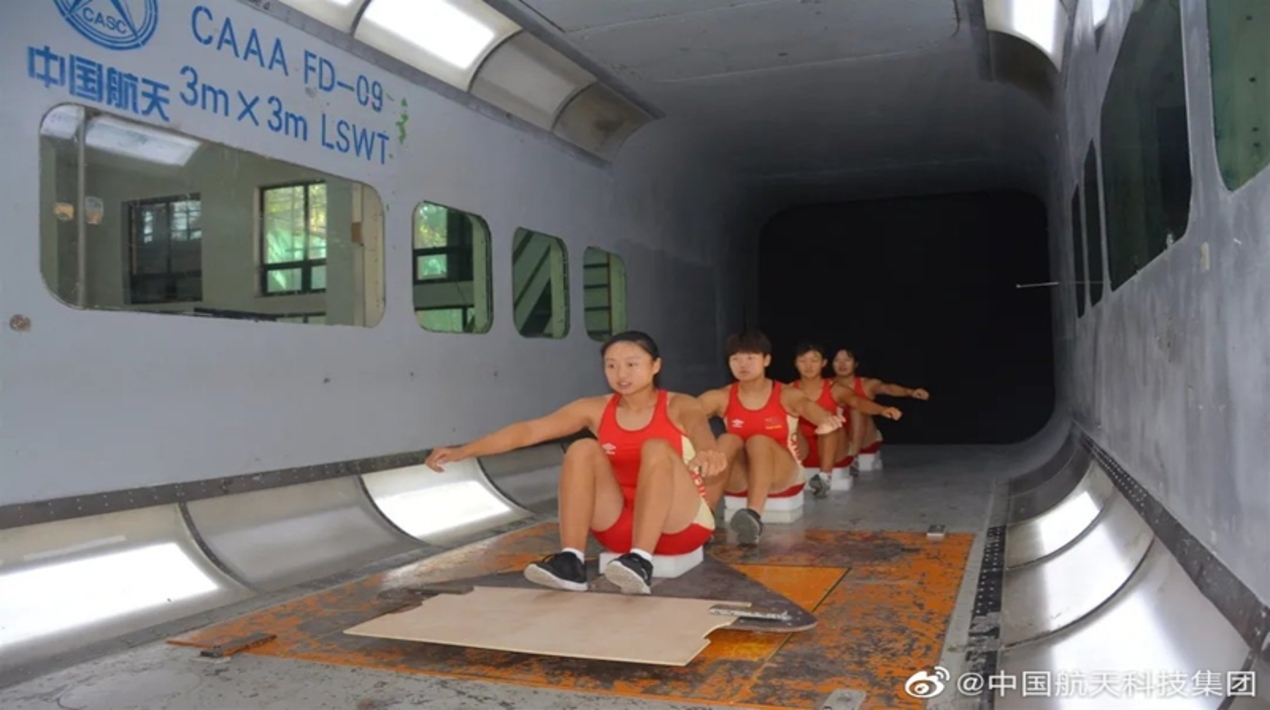
Many of the Chinese athletes competing at the Tokyo 2020 Olympic Games are benefiting from technological assistance from China’s space scientists and engineers. Before setting out for the Tokyo Games, dozens of athletes in the Chinese delegation visited an area in the southwestern suburbs of Beijing that is home to several leading space technology organisations.
During their stay, the athletes were exposed to technologies normally used in the research and development of carrier rockets, missiles and unmanned planes, and listened to suggestions from experts from the China Academy of Aerospace Aerodynamics. China used technology and equipment to help rowers, swimmers and cyclists in the national team to improve their training and performance.
According to the article, during the preparation period of the Chinese swimming team for the Olympics, the China Academy of Aerospace Electronics Technology (CAAET) carried out tests on six world swimming champions using aerospace measurement equipment and gained analysis data through simulation training, which helped make scientific training plans for athletes and provided scientific support for improving their performances.
Apart from swimming, aerospace technologies have also been applied to training programs for other sports, such as rowing. rowers in the women’s quadruple sculls came to my lab and used a low-speed wind tunnel to measure the air drag on their bodies during a contest. The results enabled their trainers and researchers to analyse and adjust the athletes’ moves, optimise training methods and redesign sport suits. China won a gold medal in the women’s quadruple sculls with a world-record time in Tokyo, its second-ever Olympic gold in the rowing competition after the 2008 Beijing Games.
According to the engineer, wind tunnels are the most essential hardware in aerodynamic research and experimentation as they create and manipulate the airstream around an aircraft or a rocket to verify and measure its aerodynamic performance. During the past few years, wind tunnels have become increasingly popular in Western countries, including the United States and Canada, as coaches and athletes have found the infrastructure useful in improving moves, training methods and equipment.
In addition to the wind tunnels in its compound, the academy also built a training wind tunnel at a national winter sports training and research centre in Beijing’s Fengtai district for the General Administration of Sport. The tunnel has an internal space of 60 cubic meters and can generate winds with speeds of up to 151 kilometres per hour. It can host experiments for both winter and summer sports, said a project manager at the academy in charge of the tunnel’s construction and operations.
The facility started receiving athletes in October and is mainly used in preparations for the Beijing 2022 Olympic Games. The academy’s tunnels and other technologies have greatly helped Chinese athletes, some of whom have won gold in Tokyo.
As reported by OpenGov Asia, China aims to improve the evaluation system for scientific and technological achievements and accelerate their transformation into real productive forces. The quality of scientific and technological innovation, their achievements in applied technology, and their contributions to economic and social development should be the core of the evaluation.
The scientific, technological, economic, social and cultural value of scientific and technological achievements should be evaluated comprehensively and accurately, especially their multiple applications. A classified evaluation system should be improved.
For basic research results, peer review should be the major evaluation method, while applied research results should mainly be evaluated by industry users and social forces, with high-quality intellectual property output, new technology, new materials, new processes, new products and performance of new equipment’s prototype as main evaluation indicators.
Big data, Artificial Intelligence (AI) and other technical means should be adopted to develop information tools for evaluation and to enhance research on evaluation theory and methods of scientific and technological achievements. Also, a cross-industry, cross-department, cross-regional database collecting scientific and technological results, demand, cases, and evaluation tools and methods should be established.
















